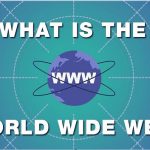There are many protocols used by the Internet and the WWW:
o TCP/IP
o HTTP
o FTP
o Electronic mail protocols IMAP
o POP
TCP/IP
The Internet uses two main protocols (developed by Vincent Cerf and Robert Kahn) Transmission control protocol (TCP):Controls disassembly of message into packets at the origin reassembles at the destination
Internet protocol (IP):Specifies the addressing details for each packet Each packet is labelled with its origin and destination.
Hypertext Transfer Protocol (HTTP)
• The hypertext transfer protocol (HTTP) was developed by Tim Berners-Lee in 1991
• HTTP was designed to transfer pages between machines
• The client (or Web browser) makes a request for a given page and the Server is responsible for finding it and returning it to the client
• The browser connects and requests a page from the server
• The server reads the page from the file system, sends it to the client and terminates the connection.

Electronic Mail Protocols:
• Electronic mail uses the client/server model
• The organisation has an email server devoted to handling email o Stores and forwards email messages
• Individuals use email client software to read and send email
o (e.g. Microsoft Outlook, or Netscape Messenger)
• Simple Mail Transfer Protocol (SMTP)
o Specifies format of mail messages
• Post Office Protocol (POP) tells the email server to:
o Send mail to the user’s computer and delete it from the server
o Send mail to the user’s computer and do not delete it from the server o Ask whether new mail has arrived.
Interactive Mail Access Protocol (IMAP)
Newer than POP, provides similar functions with additional features.
o e.g. can send specific messages to the client rather than all the messages. A user can view email message headers and the sender’s name before
downloading the entire message.
Allows users to delete and search mailboxes held on the email server.
The disadvantage of POP: You can only access messages from one PC.
The disadvantage of IMAP :Since email is stored on the email server, there is a need for more and more expensive (high speed) storage space.


